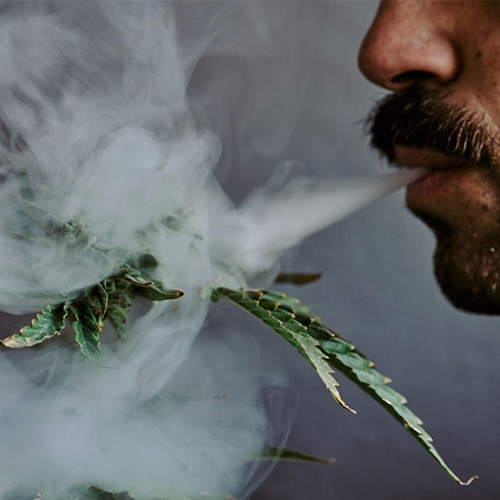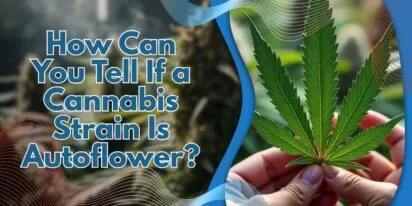Table of Contents

In the ever-evolving landscape of cannabis cultivation, the debate rages on about the nuanced disparities between Autoflower vs Photoperiod seeds. Seasoned experts delve into harvest times, yields, effects, and growth ease, dissecting the dichotomy between these seed types. This comprehensive article will delve deeper into these aspects, providing you with the most up-to-date insights.

Our journey began in the early 1940s when a wild hemp strain, known as “Ruderalis,” was stumbled upon in Russia. Ruderalis paved the way for autoflowering cannabis strains, setting them apart from their “photoperiod” counterparts, necessitating specific solar signals to commence flowering, relying on meticulously timed light schedules. In stark contrast, Ruderalis plants commence flowering at the tender age of 3-4 weeks, irrespective of environmental cues, offering the prospect of harvesting buds within a few months from seed. Ruderalis, although petite with low THC content, possessed a short life cycle that suited Russia’s brief summers and lengthy winters.
An astute breeder recognized the potential of Ruderalis’ autoflowering trait and short growing period and thus began crossbreeding Ruderalis with photoperiod strains. This marriage of genetics led to the birth of autoflowering strains, initially coined as “Lowryders.” These strains have now increased, yielding buds that rival the potency of other cannabis strains through generations of careful breeding.

Autoflowering cannabis strains set themselves apart by their independence from specific light schedules to initiate flowering. Photoperiod strains, in contrast, mandate a minimum of 12 hours of uninterrupted darkness to trigger flowering. Outdoor cultivators must time their plantings to align with spring and the impending winter.
Indoor growers can exert control over the light schedule by employing timers, creating ideal conditions for flowering. Autoflowering plants, however, embark on their flowering journey within weeks, irrespective of the light regimen. This flexibility grants outdoor auto growers the advantage of planting at the optimal time or aligning their cultivation with the local time zone, relying solely on 2-3 months of sunny weather.

Autoflowering cannabis plants possess a shorter growth cycle, hastening the harvest time compared to their photoperiod counterparts. Following germination, autoflowering plants transition swiftly into bud production, typically within 2-3 months. Unlike photoperiod plants, autos continue growing vertically until they shift their focus entirely to developing dense, hefty buds. It’s worth noting that some auto strains may exceed the recommended harvest time, enhancing yields and potency with an additional week or two.
Photoperiod strains, on the other hand, demand patience, requiring 3-4+ months from seed to harvest, with variances based on cultivation methods and strain selection. These plants, characterized by their extended vegetative stage, are unsuited for expedited harvests.

The yield potential of autoflowering plants hinges on various factors, including cultivation setup, genetics, and grower experience. Typically, autos can yield up to 4 ounces per plant under optimal care, but this can fluctuate. Exceptional lighting is pivotal for maximizing yields, and seasoned growers have achieved as much as 6 ounces per plant in ideal conditions. The short life cycle of autos facilitates multiple annual harvests, augmenting overall yield potential.
Photoperiod strains respond favorably to growth techniques such as pruning, training, and topping, enabling growers to boost yields substantially. By benefitting from environmental control, indoor cultivators can fine-tune conditions for maximum yield. Conversely, outdoor photoperiod growers with ample space and optimal conditions can cultivate larger plants, yielding bountiful harvests. Ultimately, the yield of photoperiod strains hinges on genetics, cultivation techniques, environmental factors, and grower expertise.

Although autoflowering strains offer fewer options, their potency mirrors that of photoperiod cannabis plants. While auto strains tend to feature elevated CBD levels due to Ruderalis’ influence, contemporary auto strains have been meticulously bred to emulate photoperiod counterparts, exemplified by strains like “Blue Cheese.” Autoflowering strains also boast comparable aroma and flavor profiles, with the main visual distinction being their additional foliage among the buds. This characteristic may necessitate extra care during trimming but can also expedite bud growth in lower light conditions.

Autoflowering strains operate on an internal timer, commencing flowering approximately 3-4 weeks post-germination. Depending on the specific strain, this timeline remains impervious to grower intervention, with flowering lasting 2-3 months from seed. Unlike photoperiod strains, autoflowering plants do not demand a specific light schedule to instigate flowering. They can thrive with as little as 12 or 8 hours of daily light, although increased light levels correlate with larger yields.
This internal clock imparts a unique advantage to autoflowering strains, enabling cultivation in well-illuminated urban settings where photoperiod plants may struggle. Additionally, they are ideal for warm climates, permitting cultivation beyond the standard growing season, with harvests as early as July. In contrast, photoperiod plants typically culminate in harvest during mid to late fall.

Autoflowering strains offer relative simplicity in cultivation but come with their own set of challenges. They are particularly vulnerable during their early growth stages, as they will commence flowering irrespective of their health status. Stunted growth early on can lead to reduced yields. While auto strains are resilient and will follow their internal schedule, growers must address any issues swiftly to secure a successful harvest.
Photoperiod strains afford more control over the growth cycle, with the vegetative stage offering room for recovery and intervention before transitioning to the flowering phase. This grants growers an opportunity to rectify any problems before the critical flowering stage begins. For novice growers, photoperiod strains may be a preferable choice, as they tolerate various growing challenges during the vegetative stage.
In summation, both autoflowering and photoperiod strains have their merits, catering to different cultivator preferences and skill levels. The choice ultimately hinges on factors such as available space, desired yield, and cultivation experience. The cannabis cultivation landscape continues to evolve, offering a diverse array of options to suit every grower’s needs.

Curious about growing weed in a healthy, effective way? Welcome to the realm of weed hydro! This method uses water instead of soil, delivering n

Peyote Zkittlez is a unique cannabis strain that has quickly gained dedicated followers among enthusiasts and patients alike. Its parentage—Zk

As growers, we want strains that work well, are strong, and are of good quality. Autoflowering cannabis strains are a big step forward for both

Pot growers always ask the same basic question: How much weed does a weed plant produce? The answer is complex and depends on a multitude of var

Ever had the room spin after a few hits? You're not alone. Figuring out how to prevent getting dizzy high can make your cannabis experience a wh

Drying cannabis properly is a critical process in preserving the plant's full aroma and flavor and its psychoactive abilities. Tampering with th

Ever caught yourself a bit too high and all of a sudden in need of being normal? Whether you're heading out for munchies or bumping into someone

Looking for sage advice on how not to get pinched with weed without batting an eye? Attempting to protect your stash from gossipy roommates, sno

Nutrient lockout, also known as nutrient binding or chemical antagonism, is a significant issue in cannabis cultivation that negatively impacts

Germination is the most critical initial stage in growing healthy, high-quality cannabis plants. During germination, the dormant seed becomes a
Are You 18 Or Over?
By selecting “Continue”, you confirm that you are at least 18 years of age and legally permitted to access cannabis related content in your region.
By using Rocketseeds.com, you agree to our legal disclaimer.
Excellent blog here Also your website loads up very fast What web host are you using Can I get your affiliate link to your host I wish my web site loaded up as quickly as yours lol
Your writing is not only informative but also incredibly inspiring. You have a knack for sparking curiosity and encouraging critical thinking. Thank you for being such a positive influence!
Simply wish to say your article is as amazing The clearness in your post is just nice and i could assume youre an expert on this subject Well with your permission let me to grab your feed to keep updated with forthcoming post Thanks a million and please carry on the gratifying work
Somebody essentially lend a hand to make significantly articles Id state That is the very first time I frequented your website page and up to now I surprised with the research you made to make this actual submit amazing Wonderful task
Your blog is a beacon of light in the often murky waters of online content. Your thoughtful analysis and insightful commentary never fail to leave a lasting impression. Keep up the amazing work!
Thank you for the auspicious writeup It in fact was a amusement account it Look advanced to more added agreeable from you By the way how could we communicate
Your blog is a constant source of inspiration for me. Your passion for your subject matter shines through in every post, and it’s clear that you genuinely care about making a positive impact on your readers.
Your blog is a constant source of inspiration for me. Your passion for your subject matter is palpable, and it’s clear that you pour your heart and soul into every post. Keep up the incredible work!
Your articles never fail to captivate me. Each one is a testament to your expertise and dedication to your craft. Thank you for sharing your wisdom with the world.
Your blog is a testament to your dedication to your craft. Your commitment to excellence is evident in every aspect of your writing. Thank you for being such a positive influence in the online community.
Your writing has a way of resonating with me on a deep level. I appreciate the honesty and authenticity you bring to every post. Thank you for sharing your journey with us.
Your blog is a true gem in the world of online content. I’m continually impressed by the depth of your research and the clarity of your writing. Thank you for sharing your wisdom with us.
Hi i think that i saw you visited my web site thus i came to Return the favore Im attempting to find things to enhance my siteI suppose its ok to use a few of your ideas
Somebody essentially help to make significantly articles Id state This is the first time I frequented your web page and up to now I surprised with the research you made to make this actual post incredible Fantastic job
Usually I do not read article on blogs however I would like to say that this writeup very compelled me to take a look at and do so Your writing taste has been amazed me Thanks quite nice post
Your blog has quickly become one of my favorites. Your writing is both insightful and thought-provoking, and I always come away from your posts feeling inspired. Keep up the phenomenal work!
Every time I visit your website, I’m greeted with thought-provoking content and impeccable writing. You truly have a gift for articulating complex ideas in a clear and engaging manner.
Hey there You have done a fantastic job I will certainly digg it and personally recommend to my friends Im confident theyll be benefited from this site
I have read some excellent stuff here Definitely value bookmarking for revisiting I wonder how much effort you put to make the sort of excellent informative website
Nice blog here Also your site loads up very fast What host are you using Can I get your affiliate link to your host I wish my site loaded up as quickly as yours lol
What i do not understood is in truth how you are not actually a lot more smartlyliked than you may be now You are very intelligent You realize therefore significantly in the case of this topic produced me individually imagine it from numerous numerous angles Its like men and women dont seem to be fascinated until it is one thing to do with Woman gaga Your own stuffs nice All the time care for it up
Your blog is a beacon of light in the often murky waters of online content. Your thoughtful analysis and insightful commentary never fail to leave a lasting impression. Keep up the amazing work!
Your blog is a breath of fresh air in the often stagnant world of online content. Your thoughtful analysis and insightful commentary never fail to leave a lasting impression. Thank you for sharing your wisdom with us.
Your blog is a beacon of light in the often murky waters of online content. Your thoughtful analysis and insightful commentary never fail to leave a lasting impression. Keep up the amazing work!
Usually I do not read article on blogs however I would like to say that this writeup very compelled me to take a look at and do it Your writing style has been amazed me Thank you very nice article
Your writing has a way of resonating with me on a deep level. I appreciate the honesty and authenticity you bring to every post. Thank you for sharing your journey with us.
This hydroponics guide is quite the buzz, seriously! Who knew growing weed without dirt could be so complicated yet potentially rewarding? The breakdown of systems like DWC and NFT is helpful, though I suspect my cat might confuse the air pump for a toy. The idea of cleaner buds is tempting, especially since explaining hydro weed to my non-growing friends might get messy. And the bit about potential dizziness from hydro weed? Perfect, now I have an excuse for why I always stumble a bit after a grow session. Still, the promise of faster grows and higher yields is hard to ignore, even if it means more trips to the pH meter than to the coffee shop. Overall, a cultivating read for the curious grower!